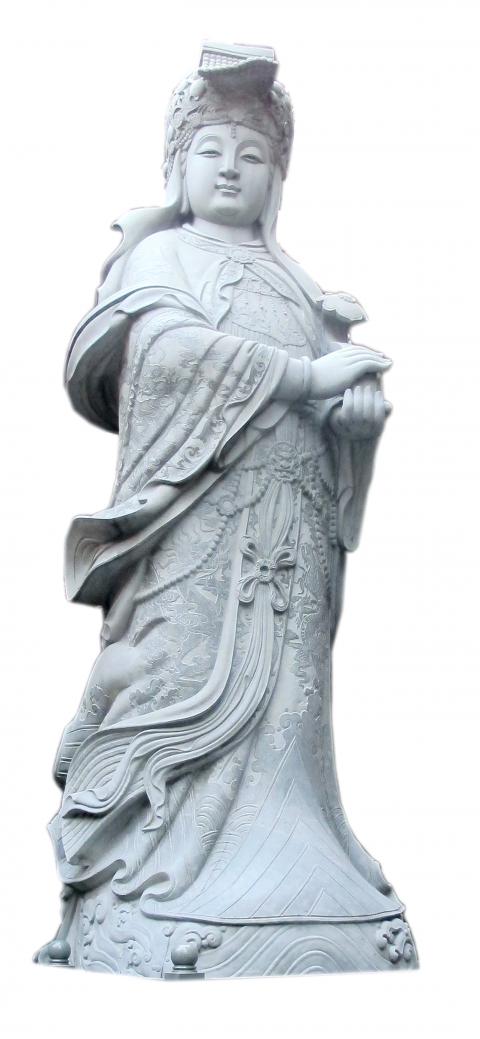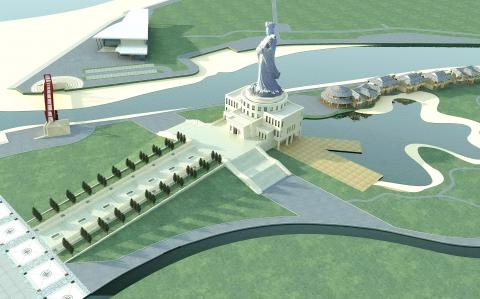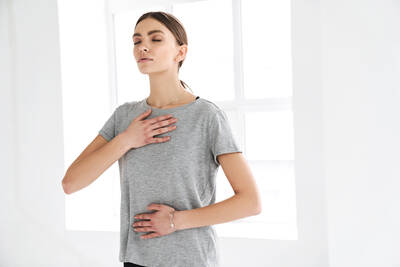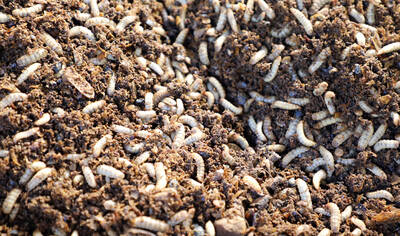Among the NT$1.2 billion (US$39.8 million) to be spent building the proposed Daan Matsu cultural park in Greater Taichung, around NT$600 million of the funds will go toward constructing a nearly 70m tall statue of Matsu, including the foundation and a path of reverence for the sea goddess. Greater Taichung’s Tourism and Travel Bureau Director General Chang Da-chun says, “This will definitely be the tallest Matsu statue in Southeast Asia.” There are already many official and private tour groups from China making queries, Chang says, adding that he is confident that, along with Jenn Lann Temple in Dajia, “It will create a huge tourist attraction.”
Greater Taichung’s Christian community has joined forces and says that the tallest cross in Southeast Asia should also be erected. Liao Chin-ho, the minister who has made the request on the community’s behalf, says that Christianity and Catholicism belong to the world’s three major religions. If you combine Christians from China and Taiwan, the cost of building the tallest cross in Southeast Asia would not exceed the amount it will cost to build the Matsu statue, and the tourist value would definitely not be less than the Matsu statue either, Liao says.
Chang says that he is afraid building the tallest cross in Southeast Asia would be a bad idea, although he says that the Greater Taichung Government would consider the possibility of constructing a statue of Jesus. The location would not necessarily have to be in Daan District, Chang says, adding that the chosen location could help diversify tourist development in Greater Taichung. It could be done in collaboration with a private group, but still needs to be evaluated, Chang says.

Photo: Yu Chao-fu, Liberty Times
照片:自由時報記者俞肇福
Liao says that the churches that have come together are asking for a cross to be built, not a statue of Jesus. Minister Gao Tzu-chiang, convener of churches in the eight districts along the west coast, says that a cross can cover Catholicism and all of the different Christian denominations, and also serve to represent the lord’s salvation. If a statue was going to be erected, there would be some controversy over whether to make it a statue of Jesus, Saint Mary or Saint Paul, making a statue inappropriate, Gao says.
According to the local government’s current plans, contractors were originally going to begin work for the Daan Matsu cultural park in May. After residents criticized the design last week during an explanatory session, the bureau decided to make changes according to suggestions from locals and hope to hand over the project to the general contractor by the end of June. Aside from living up to claims of being the tallest Matsu statue and the largest path of reverence to the goddess in Southeast Asia, there will also be an area for selling local agricultural products, a wind-barrier hallway, a wall displaying the story of Matsu, an ocean theater with a water screen movie theater, an ecological hotel and a villa.
(Liberty Times, Translated by Kyle Jeffcoat)

Photo courtesy of the Greater Taichung Government
照片由台中市政府提供
台中大安媽祖文化園區將斥資十二億元興建,其中預計高近七十公尺的媽祖神像及基座加上瞻仰大道,經費約六億元。台中市觀光旅遊局局長張大春上週表示,這確定會是「東南亞最高的媽祖像」,而目前已有不少中國官方及民間旅遊團在詢問,他有信心,和大甲鎮瀾宮串連,「會打造極大的觀光賣點」。
台中的基督教界串連喊出要興建「東南亞最高的十字架」。提出串連要求的牧師廖金河表示,基督教及天主教是世界三大宗教之一,如果以中國加上台灣的基督信徒,在台中蓋「東南亞最高的十字架」,花的錢「不會比媽祖像多」,觀光價值也絕對不輸媽祖像。
張大春對此表示,「要蓋東南亞最高的十字架」恐怕不太好;他認為,如果要蓋「基督像」,市府可以考慮,而地點未必要在大安,可以選擇其他地區做多元觀光發展,也可以選擇和民間合作,不過這還需要再評估。
廖金河則說,目前各教會串連,要求蓋的是「十字架」、不是「基督像」;西海岸八區教會召集人高自強牧師則說,十字架可涵蓋天主教、基督教各教派,並代表天主「救贖」的意義,如果要蓋「像」,那又會出現要蓋耶穌、聖母瑪利亞還是聖保羅的爭議,並不妥當。
依據目前市府規劃,大安媽祖文化園區原本五月要發包,但上週說明會上,居民對造型有意見,因此觀光局針對地方意見做修改,希望六月底能發包。除了宣稱將是東南亞最高的媽祖像、瞻仰大道外,也會有農特產品區、防風迴廊兼媽祖故事展示牆、海上劇場含水幕電影席、生態旅館及VILLA區與觀光漁市主題,預計在一○五年完工。
(自由時報記者唐在馨)

A: Apart from the Taipei Music Center’s exhibit and concert, US pop rock band OneRepublic and rapper Doja Cat are touring Kaohsiung this weekend. B: OneRepublic is so popular that after tonight’s show at the K-Arena, they are set to return to Taiwan again in March next year. A: And Doja will also perform at the same venue on Sunday, right? B: Yup. Her collab with Blackpink’s Lisa and singer Raye for the song “Born Again” has been a huge worldwide success. A: Doja even made it on Time magazine’s “100 Most Influential People” list in 2023. She’s so cool. A: 本週末除了北流的特展和演唱會外,美國男團共和世代和饒舌歌手蜜桃貓朵佳也將來台開唱。 B: 共和世代因太受歡迎,繼今晚高雄巨蛋的演唱會後,預計明年3月即將再度來台巡演唷。 A: 朵佳本週日將在同場地開唱,對不對?

A: What show are you watching online? B: I’m watching “Fly Me to the Moon & Back” – an exhibition launched by the Taipei Music Center (TMC) to commemorate the late singer Tom Chang. A: Known for his sky-high notes, Chang is praised as one of the best singers in the 1990s. His death at the age of 31 was a major loss indeed. B: And I’m so glad that we went to the TMC’s 90s-themed concert last Friday. I finally saw the iconic “Godmother of Rock” WaWa perform live. A: This year-end show also featured singers Princess Ai, Bii, Wayne Huang, PoLin and

Just like fingerprints, your breathing patterns may serve as a definitive identifier. In a recent study, scientists have demonstrated an astonishing 96.8% accuracy in identifying individuals based on their respiratory patterns. This revelation could open up new possibilities in biometrics and personalized health monitoring. The notion of using individual breathing patterns as a distinct biological signature has long been a topic of discussion within the respiratory science community, yet a practical method for measurement remained elusive. This changed with the invention of a tiny, wearable device capable of extended recording. Researchers deployed a lightweight tube designed to fit inside

In most cities, food waste is often regarded as one of the most troublesome types of waste: it has a high moisture content, spoils easily and produces strong odors. If not handled properly, it can cause serious sanitation and environmental problems. From the perspective of the circular economy, however, food waste is not “useless leftovers,” but rather an organic resource that has yet to be effectively utilized. The core principle of the circular economy is to break away from the linear model of “production–consumption–disposal,” allowing resources to circulate repeatedly within a system and extending their useful life. Food waste occupies a